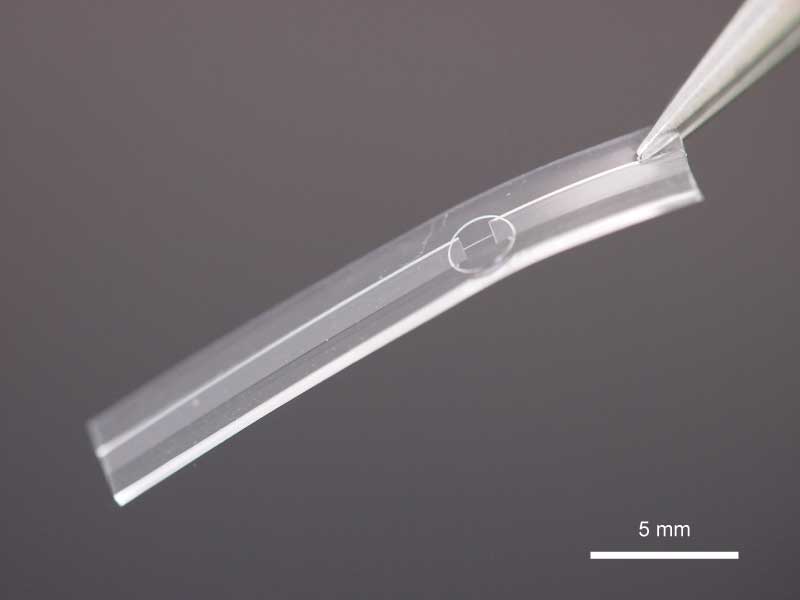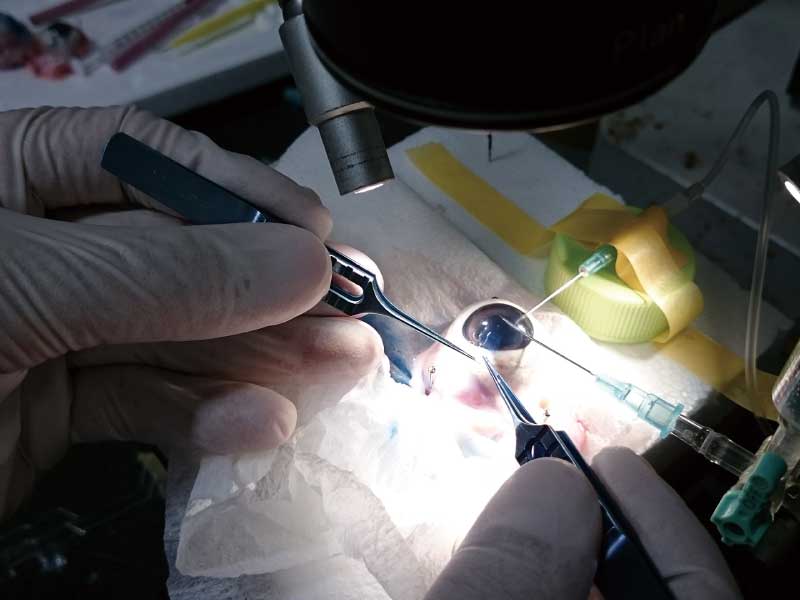Abstract
In our eye, there is a circulating liquid flow called aqueous humor flow, which spreads oxygen and nutrition over the eye and moves wastes out of the eye. When the paths of the flow are blocked for some reasons, the intraocular pressure (IOP) gradually increases. The high IOP results in the degradation of optic nerves leading to visual field defect and ultimately to blindness. This optic neuropathy is called glaucoma. Implantation of a drainage device which can decrease the IOP is one of the invasive approaches for treatment of glaucoma. While some kinds of glaucoma drainage devices are currently available for clinical use, they have some drawbacks such as thick bodies and hard tubes.
 Prototype of microfluidic glaucoma drainage device
Prototype of microfluidic glaucoma drainage device
Our group aims to develop a new soft glaucoma implant device having a sheet-like thin body by using microfluidic technologies. So far we have developed a simple prototype of the microfluidic glaucoma drainage device and tested it in vitro. We fabricated it using the techniques of photolithography and silicone elastomer replica molding. The developed device has a microscopic flow path for drainage and a passive micro valve for pressure regulation. Then, we have already evaluated the opening threshold pressure of the micro valve and compared different sizes of micro valves with each other through both the bench-top tests and ex vivo experiments using a pig eye. The results showed that the micro valve opened at a certain pressure and the liquid drained out from anterior chamber to the outside. These tests suggested that the developed prototype of implant device could regulate the pressure for the treatment of glaucoma.
 ex vivo testing using the develped glaucoma implant device
ex vivo testing using the develped glaucoma implant device
Collaboration
- Department of Ophthalmology and Vision Correction, University of Tokyo Hospital
Sponsor
- JSPS KAKENHI
- MEXT Translational Research Network Program